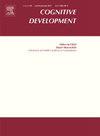The relative age effect in secondary schools
IF 1.8
3区 心理学
Q3 PSYCHOLOGY, DEVELOPMENTAL
引用次数: 0
Abstract
This longitudinal study investigates the Relative Age Effect (RAE) on academic achievements in inclusive secondary schooling in mainstream pupils (n = 2696) and those with special educational needs and disabilities (SEND) (n = 299). The RAE is based on the assumption that increased age also predicts maturity and performance, with relatively older children and adolescents being at an advantage. However, different to previous research using months per year for relative age, the current study uses differences in years per school class. Four chronological age (CA) groups could be identified in one school year, ranging from age 10–15. Younger pupils in class were at an advantage and showed better performance than older pupils (reverse RAE): Multiple ordinal logistic regression (MOLR) showed that the likelihood of belonging to the younger or older adolescents in class (RAE) could be predicted by school grades. Excellent mathematics marks predicted belonging to younger pupils, while low language grades predicted belonging to older pupils in class. In pupils with SEND, grades predicted age group in either direction independently of the school subject. Parental years in education (CASMIN) and migration background were both associated with CA groups but not with each other: Younger pupils were more likely to have parents with longer education and less likely to have a migration background, while for older pupils the opposite was true. Path models revealed that while the RAE and migrant background were negatively associated with school performance, parent education was more important for competencies than for school grades.
中学的相对年龄效应
本纵向研究调查了主流学生( = 2696)和特殊教育需要和残疾学生(SEND)( = 299)在全纳中学学业成绩上的相对年龄效应(RAE)。RAE是基于年龄增长也预示着成熟和表现的假设,相对较大的儿童和青少年处于优势地位。然而,与之前的研究使用每年几个月的相对年龄不同,目前的研究使用了每个学校班级的年龄差异。在一个学年中可以确定四个实际年龄(CA)组,从10-15岁不等。班级中年龄较小的学生比年龄较大的学生具有优势,表现出更好的表现(反向RAE):多元有序逻辑回归(MOLR)显示,学校成绩可以预测班级中属于年龄较小或较大的青少年(RAE)的可能性。优秀的数学成绩预示着属于年龄较小的学生,而较低的语言成绩预示着属于班级中年龄较大的学生。在患有SEND的学生中,成绩在任何方向上都独立于学校科目预测年龄组。父母受教育年限(CASMIN)和移民背景都与CA组相关,但彼此无关:年龄较小的学生更有可能拥有受过较长教育的父母,而不太可能有移民背景,而年龄较大的学生则相反。路径模型显示,虽然RAE和移民背景与学校表现呈负相关,但父母教育对能力的影响比对学校成绩的影响更大。
本文章由计算机程序翻译,如有差异,请以英文原文为准。
求助全文
约1分钟内获得全文
求助全文
来源期刊

Cognitive Development
Multiple-
CiteScore
3.20
自引率
5.60%
发文量
114
期刊介绍:
Cognitive Development contains the very best empirical and theoretical work on the development of perception, memory, language, concepts, thinking, problem solving, metacognition, and social cognition. Criteria for acceptance of articles will be: significance of the work to issues of current interest, substance of the argument, and clarity of expression. For purposes of publication in Cognitive Development, moral and social development will be considered part of cognitive development when they are related to the development of knowledge or thought processes.
 求助内容:
求助内容: 应助结果提醒方式:
应助结果提醒方式:


